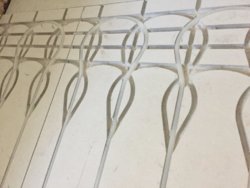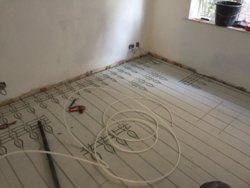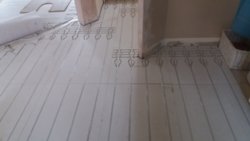O
Old Mod
There are other overlay systems that are much safer to use Jon, Polypipe being one, or other similar types. These are installed in to inert gypsum or cement based boards and are far more suited to your application.
You may also consider Bekotec therm from schluter, it’s a very low profile ufh system fitted in just 35mm of screed (I think it’s 35mm) which can be run hot or cold. I must admit I don’t know off top of my head if it’s suitable with your heat source. But knowing schluter, I’d be surprised if it wasn’t.
You may also consider Bekotec therm from schluter, it’s a very low profile ufh system fitted in just 35mm of screed (I think it’s 35mm) which can be run hot or cold. I must admit I don’t know off top of my head if it’s suitable with your heat source. But knowing schluter, I’d be surprised if it wasn’t.



